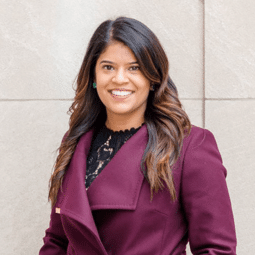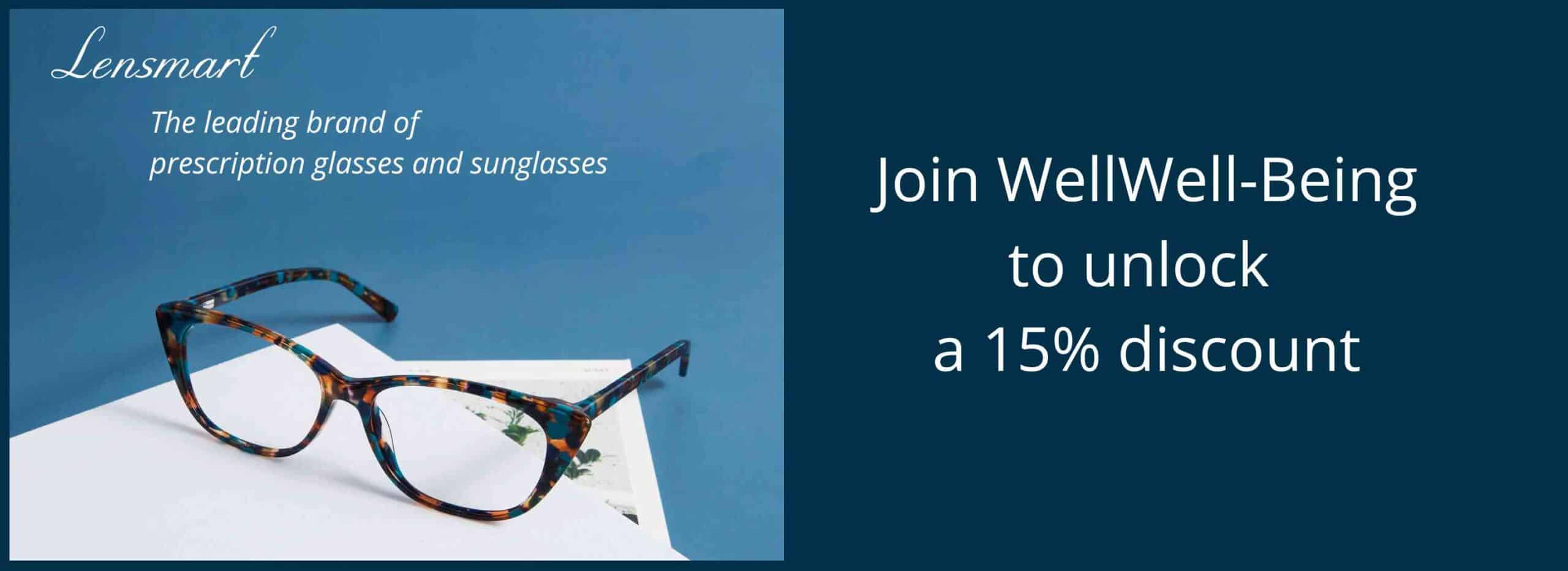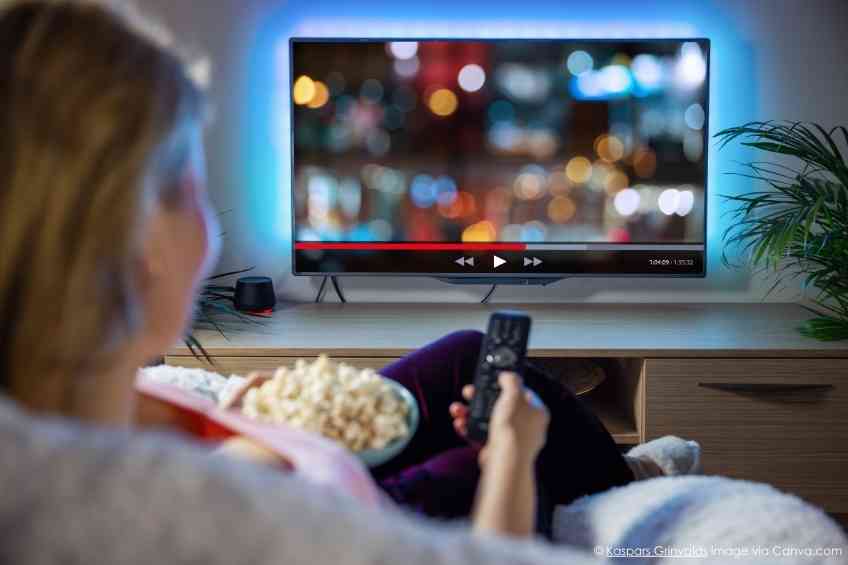Most people seem to take their vision for granted unless they have to face some catastrophic eye issue. Sure, many accept the glasses will probably be needed as they age. But, for the most part, the eyes and the vision they offer are something of a mystery best left undisturbed, except for the occasional check-up to update a glasses prescription. Eyes are not only windows to the soul, they can also provide insights into other potential health risks. What’s more, glasses are inevitable and eyecare doesn’t have to be a mystery. Dr. Purnima Patel of the American Academy of Ophthalmology understands this all too well. She spoke to WellWell recently about how we can all take a clear look at eyecare and support better vision.
We assume as we get older, our eyesight is going to deteriorate and that’s inevitable. Is that a correct assessment?
People don’t need to be resigned to losing vision as they have more birthdays. It is not an inevitability. There are certain eye conditions that we see more commonly with age, but we take care of the full spectrum of eye diseases that can happen in newborns to much older people. And the other thing is glasses are not our only solution. It is a solution that typically helps an eye that sees fine otherwise but just needs a little help with extra power or a little less power with the glasses to focus an image right on the retina. And that’s basically the only purpose of glasses or contact lenses. But if you have vision-threatening eye conditions that may affect your ability to see well even with glasses, we have so many different solutions that glasses are a big part of, but not the only solution. So, two things are one, people do not need to be resigned to losing vision or feeling like they’re going to lose vision. And two, there are a lot of things that we can do to help and protect eye health, but it involves patients coming in to be seen.
Why don’t people assume there’s more they can do for their eyesight than just wearing glasses?
I think some of it is just not being aware. Sometimes as much as I think that sight is so important and people when they sit back and think of the loss of sight, it is a fear that is only behind cancer at this point. But when people think of when their vision is good, it’s almost like it’s taken for granted that they can see well. So, I think that’s one reason why maybe people are not seeking eye examinations and eye care. And this is when patients don’t have symptoms. I think patients are very quick, for the most part, to come in if they’re having a problem. The second part to your question about fear of examinations, I think it’s the same with a lot of doctor’s visits. People have apprehension about the unknown. Not necessarily wanting to walk into a room and get bad news, for example.
People also think that we still do that puff test to check eye pressure, which we do not. We have much better, easier-tolerated procedures for checking a patient’s eye pressure that even children tolerate without any fuss. So that’s something that is a myth that I wanted to dispel. The eye exam is actually pretty easy. We know that and we have a lot of other machinery and technology that we use to compare a patient’s answer to arrive at something that is the best for the patient. The third thing I think people fear about the eye exam is the dilation, which is very important to pick up a lot of disease and pathology in the back part of the eye. I know some patients choose to forego it, but it provides an incredible amount of information about what is going on in the rest of the body.
What causes the natural deterioration of eyesight as we get older? Is it genetic? What can we do about it?
It doesn’t have to deteriorate, but everyone as they get older is going to develop more cataract changes. So that’s the clouding of the natural lens that sits behind the color part of the eye or the iris. It acts like a little magnifier and focuses the light that comes into our eye onto the retinas we can see or our brains can see. Any clouding of that lens will scatter light. So, patients will notice early on that maybe colors don’t look as bright. They need more light in darker-lit situations to be able to read. And then as it progresses, they may notice glare from oncoming headlights. Cataract surgery is the most common surgery that’s done in America. And it’s very, very safe and it reverses this problem. So having a cataract does not mean that you’re going to lose vision. That’s something that’s a reversible cause of blindness. The other thing that we see as people get older is more dry eyes. And part of that is exacerbated by our major lifestyle changes that all of humanity for the most part has experienced in the last several decades, where we’re staring at a screen all day or a device, and that makes us not blink as much and that can exacerbate dry eyes. There’s no cure for dry eyes, but we certainly have many, many treatments that we can make patients feel more comfortable and improve the quality of their vision. Sometimes people will have just changes in their corneas that will develop as they get older, but for the most part, those are the two major things that affect sight.
Another thing that’s age-related that can happen in the eye is the development of floaters. The back of the eye is filled with a clear jelly that’s the consistency of uncooked egg whites. Starting in our 50s or so, people will start developing liquefaction of that jelly and start seeing floaters. It’ll look like little squiggly lines or feel like a bug that they are going to swat at. Sometimes people will have changes in their corneas that will develop as they get the heat. For the most part, those are the two major things that have never affected sight. Another thing that’s age-related that can happen in the upper right is the development of floaters. The back of the eye is going to be the proof of that. That is an age-related change. It happens to everybody pretty much before age 70, but we don’t know in the 50s to 70s when exactly that jelly change is going to occur. But those are the major age-related changes that are common, and pretty much everyone, if they have enough birthdays, will experience. So, cataracts, dry eyes and floaters.
What about focus? Is that the reason we need to wear glasses in terms of vision?
No, so remember, a lot of people start needing glasses even as children. Most of the time, the majority of the need for glasses is that there is a mismatch between the power of the natural lens that a patient is born with and the length of their eye. And so, all the glasses do is if the focal point is in front or behind the retina, they’ll move the focal point. It’s just using physics. Sometimes it’ll be a cornea problem that also helps us bend light or a lens problem that helps us bend light. But it’s taking the total bending power of light in your eye and the glasses are just adding or subtracting power in order to compensate for any issue there. After patients get older, sometimes there can be changes in the shape of the cornea and changes in the lens of the eye, especially when cataracts form, which to some degree the glasses will help neutralize. Now all of us after we hit about 45 are going to lose our ability to see up close. So, we need to start needing help. We either have to hold our arms a little bit further out or we have to get some glasses to help us see up close. When you’re young, you still retain that ability to reshape the lens of your eye to help you focus up close. But when you get older, your muscles can’t, your eye muscles can’t do that anymore, and you need a little bit of help with near-reading glasses.
How can people maintain their eye strength? Or is it kind of a natural function of aging that you’re going to need some support?
We can’t turn back time. But there are certain things that we could do to just put our eyes in a better position for maintaining and preserving vision. One is decreasing cataract formation by wearing sunglasses. And any time you’re outside in daylight, whether it’s a cloudy day or not because the UV light can penetrate through the clouds, you still want to wear sunglasses. The sunglasses also offer protection to the skin around the eyes and decrease the risk of getting skin cancers on your very delicate eyelid skin. Eating a lot of leafy green vegetables, they’re full of antioxidants like our kale and our color greens, spinach and incorporating vegetables of all different colors. We call it eating the rainbow. All of those colors provide different antioxidants that are very helpful to a busy organ like the eye. The eye uses a lot of oxygen and a lot of nutrients because it’s seeing all day. The other thing is exercise. Getting out there and doing 30 minutes of exercise. There are studies that have proven that it enhances eye health because it increases the amount of oxygen that’s getting to your eyes. Those are three major things that you can start with to help with eye health. The fourth is really coming in to get those eye exams because there’s a lot of eye disease that can get picked up early if you come in without any symptoms, come in for your routine eye exam and we can pick up diabetes, we can pick up glaucoma, we can pick up even autoimmune disease or anything going on in your eyes.
The Academy has well-studied guidelines on when people need yearly eye exams and things. Most people do not need a yearly eye exam until they hit 50. And then other than that, we’ll say like every two years, every three years, if they’re below 40 and things are doing well, then they don’t have any medical problems. We may say you can even go five years without an eye exam.
The exercise you’re talking about is standard aerobic exercise?
Yes, like even walking, anything that gets your heart rate up. Walking is good because it’s not a jazzy exercise. It has so many benefits, so many cardiovascular benefits that sometimes can’t even equate to those high-intensity interval training exercises as well. It doesn’t have to be intense and crazy. If you can get your heart rate up for 30 minutes, it still helps general and mental health. There are a lot of powerful benefits of just getting out there walking, but it could be swimming, it could be hiking, whatever it is that’s getting you out and moving.
You talked about vegetables. Are carrots really good for your eyesight?
They are, but they’re not the only thing. People are like, you just eat a bunch of carrots and your eye vision will be great. Not true. But it is certainly part of the rainbow that we want you to eat.
What are other potential diseases that people need to be aware of when it comes to eye health? And what are some of the symptoms they need to be aware of?
One of the leading causes of blindness in working-age adults in America is diabetic eye disease. And that’s important because when we say working age, these are people who could potentially be taken out of the workforce due to deterioration in their vision. Every diabetic needs an annual eye exam at minimum and based on that annual eye exam, their eye doctor will convey whether they need to be seen more frequently or not. In a protective mechanism, the eye is trying to retain the vision as long as it can in diabetic eye disease. So sometimes you can have advanced diabetic eye disease or retinopathy we call it and still have good vision. But, you’re not going to be able to keep the good vision if it progresses and comes to a point where it’s irreversible. That’s why we recommend annual eye exams because a lot of times people will have diabetes for much longer than when it was initially diagnosed. So, it’s already causing damage. And the reason why diabetes is so bad for the body as a whole is it damages blood vessels and some of the tiniest blood vessels in your body are in your eye. And it causes these blood vessels to not function and do all the many functions that a blood vessel is supposed to do and causes damage to the organ. And so, for the eye, we’ll see bleeding in the eye, we’ll see lack of blood flow, so blind spots in the eye. We’ll see hemorrhages, so that’ll cause floaters in the vision, all from diabetic retinopathy. The eye is the only place in the body where we can actually see blood vessels. If we pick up diabetic eye disease in the eye, we know that there is, at least at the microscopic level, damage to the kidneys as well, and most often to the peripheral nerves as well, any time we pick up eye disease from diabetes. It’s important to the primary care physicians that their patients get eye exams so they can get that information as well. Then there is macular degeneration, which is a leading cause of vision loss, severe vision loss in the older population, 65 plus. Now that has a hereditary component. But, it’s not 100 percent hereditary. There are some environmental factors, like UV light exposure. And smoking exposure can increase your risk of developing macular degeneration.
There are two types of macular degeneration, a dry kind and a wet kind. The dry kind is much more common. It’s 90 percent of patients. With this, the symptom that patients notice is distortion in their central vision. It does not affect their side vision. It’s mainly the central vision that’s affected by the macular degeneration. And they can have distortion or wavy lines. They have missing spots where you can look at a face and, the eye will be missing. They don’t see that. And again, early detection is very important. Especially for the wet kind where we have a lot more treatment, even though it’s less common. We have a lot of wonderful treatments that can help patients save their vision. And now we’re getting more treatments or newer treatments for the dry kind of macular degeneration, a specific component of that. But it’s important to come in and get one evaluated so you get diagnosed early.
Would both diabetic eye and macular degeneration be picked up with a standard annual eye exam or would something else be needed?
Oftentimes we can tell just by looking and getting that dilated examination-and it’s really important to have the dilated examination because we can see so much more. And some places will say, you know, you can just get a picture and it’s different. We don’t have the 3D like we do when we use both of our eyes to look into patients’ eyes, but at least something to look at the more peripheral retina, so the whole retina will be more helpful, but we can pick it up with an examination. A lot of the time if someone is detected to have diabetic retinopathy or early macular degeneration, we will follow it up with a high-resolution test or photograph called an OCT. It’s just a picture with a very fancy camera and we can pick up at the microscopic level even early changes.
Can you see diabetic eye conditions before someone realizes they may have a wider diabetic condition? Would you be able to pick that up?
Yes. If someone doesn’t know they have diabetes and they came in for an eye exam, could we pick it up? Absolutely. Several times a year we’re the first ones to diagnose that they have diabetes. But that could happen with several other eye conditions as well. We can pick up hypertension or hypertensive disease in the body by looking at the eyes. We can pick up a lot of other autoimmune conditions and things by just looking at the eyes.
Are there other conditions people should be aware of?
I think one that we spend a lot of time screening for is glaucoma. It is a condition where people lose their side vision and oftentimes it’s painless. They don’t have any pain or trouble seeing because it’s retaining their central vision. But sometimes they’ll notice that, you know, I’m having to turn my head a little bit more. Once the damage has occurred it is irreversible. So, we spend a lot of time screening patients and risk stratifying whether we think they have glaucoma or not and going ahead and deciding on treatment, whether it be drops or laser or as a last resort surgery. But because it is largely asymptomatic, we do want to screen patients. It does run in families. So, if you have a first-degree family member who has glaucoma, and especially if they’re being treated for glaucoma, it’s important for you to get an eye exam and see where you are on the risk stratification of how likely you are to have glaucoma or not.
Do any of these diseases represent changes that can become systematic or affect you in some other way if they’re not treated?
Diabetes for sure. High blood pressure changes in the eye. Obviously, that has an effect on your risk of stroke and heart attack. A lot of the autoimmune diseases, I’ve brought that up like lupus and rheumatoid arthritis, all can manifest in the eye. That can be the first sign of those diseases, but they certainly have effects elsewhere in the body. But macular degeneration, glaucoma and cataracts are all isolated to the eye. Even other things. But we are seeing an uptick in both of those conditions in the U.S.
Do we see any ethnic groups that are more at risk other than people who are getting older and may not have had their eyes checked?
With macular degeneration, we know there’s a higher risk in patients who have lighter skin and less pigment because we know the pigment is protective against anything that can be exacerbated by UV light exposure. It’s not that we don’t see macular degeneration in darker-skinned patients. It’s just a lot more common in lighter-skinned patients. With diabetic eye disease, there’s a lot of socioeconomic overlap due to poor control and access to care and the cost of care. So that’s pretty pervasive in all different ethnicities. But I’d say with macular degeneration, we see a lot more in our lighter-skinned patients. For glaucoma, we see a higher risk in the African American population in the U.S.
Are readers dangerous or not productive? Are people opting for readers when they really should be opting for something else?
Readers are a great start if they’re having trouble seeing up close, and if it’s a change. Readers are meant for reading up close activities. We now have computer distance as well, which is a little bit further out. So, we don’t need as strong of glasses for our computer as we would for our phone. But it’s not a bad thing to get started. But you know, if it’s your first time, it’s good to get an examination so we can tell you like this is about the power we’ll need because sometimes you can go to a drug store and get something like for two seconds look at a magazine and be like these are great but then they might be too strong or not strong enough and that can cause eye strain. I think it’s good to at least get measured and a lot of times we’ll need to combine it with your prescription for distance so that you can both see distance and up close.
What are some of the misconceptions about eye health that people have?
I think the greatest misconception is that people are relegated to losing vision as they age. That’s not true. Maybe you develop some diminishing in your vision, but the most common things are reversible. So, coming in and getting treated and not thinking that you’re going to go blind… And with glasses, some people feel like I’m just stuck wearing them like I’m getting older and I’m just going to have to wear readers. Well, even for that we have so much new technology with the newer lenses with cataract surgery where our patients don’t have to wear glasses anymore, even up close. So, they can live glasses-free independent lives, not having to worry about that. There are a lot of options. There’s constantly technology and innovation that’s happening and being incorporated that really can benefit the patient. So, by coming in for an exam and not being afraid, asking the right questions and going over what your goals are, we can help our patients meet their goals and live the lives that they want to live.
 About Purnima Patel, MD
About Purnima Patel, MD
Purnima Patel, MD is a leading ophthalmologist having studied medicine at Vanderbilt University and then serving on the faculty of Emory University. She has also served as a team ophthalmologist for the Atlanta Hawks and the Atlanta Falcons and has held various posts in the American Academy of Ophthalmology. Dr. Patel has been recognized as one of the leading women in her field. She founded Ophthalmology and Retina Associates of Georgia now ORA Vision (ORA) where she specializes in not only cataract and premium lenses but also glaucoma, retina and inflammatory eye disease to help patients see their best and maintain their vision. Please visit the American Academy of Ophthalmology to learn more.













